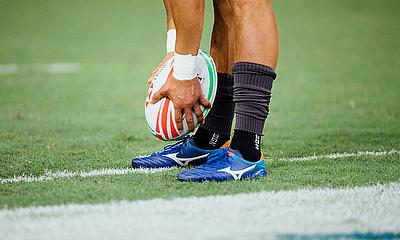How Similar Is Rugby To American Football?
At first glance, rugby and American football might seem like cousins separated at birth. Both involve oval balls, physical contact, and the goal of advancing play toward the opponent's end zone. But dig deeper and the sports reveal themselves to be more different than alike, despite their shared ancestry and similar objectives.
The most obvious difference hits you the moment players take the field. American football players look like medieval knights heading into battle, wrapped in helmets, shoulder pads, chest protection, leg guards, and face masks. Rugby players appear almost naked in comparison, wearing just shorts, shirts, and occasionally a thin scrum cap. This stark contrast in protective gear reflects fundamental differences in how contact happens in each sport.
American football's armor exists for good reason. The sport's collision-based nature creates massive impacts as players launch themselves at full speed into opponents. Rugby contact tends to be more controlled, with players wrapping up opponents and bringing them to ground rather than delivering crushing blows. The padding in American football actually enables more violent collisions by giving players confidence to hit harder.
Ball handling rules create another major distinction between the sports. Rugby players can only pass backwards or laterally, making forward progress through individual runs or tactical kicking. American football allows forward passes, opening up an entirely different strategic dimension. This single rule difference fundamentally changes how each game flows and develops.
The continuous nature of rugby versus the stop-start format of American football affects everything from fitness requirements to betting strategies. Rugby players must maintain stamina for 80 minutes of nearly uninterrupted action, while American football players focus on explosive bursts lasting just seconds. Sports analysts tracking best nfl bets today on the most popular betting platforms online often factor in these timing differences when evaluating player performance and game outcomes.
Field dimensions tell their own story about how the sports developed differently. Rugby pitches stretch up to 144 meters long and 70 meters wide, creating vast spaces for the continuous action. American football fields measure exactly 120 yards by 53 yards, optimized for the precise, measured advances that define the sport. The larger rugby field accommodates 15 players per side compared to American football's 11.
Scoring systems reflect different philosophical approaches to the game. Rugby awards five points for a try (touchdown equivalent), encouraging teams to advance into the opponent's territory for the ultimate prize. American football gives six points for touchdowns but adds complexity with field goals, extra points, and two-point conversions. Rugby's simpler scoring system keeps focus on territorial advancement and possession.
The tackle represents perhaps the most crucial difference between the sports. In American football, bringing down the ball carrier ends the play completely. Rugby requires the tackled player to release the ball immediately, allowing play to continue through rucks, mauls, and quick recycling. This creates rugby's famous continuous flow compared to American football's chess-like progression of set plays.
Squad sizes reveal different approaches to specialization. American football teams carry 53 players, each trained for specific roles in distinct phases of play - offense, defense, and special teams. Rugby squads are smaller, with players expected to contribute in all phases regardless of position. This jack-of-all-trades requirement versus hyper-specialization shapes everything from training methods to recruitment strategies.
Substitution rules further highlight the sports' different philosophies. Rugby allows only eight replacements during a match, and once a player leaves, they cannot return. American football permits unlimited substitutions, creating separate units for different situations and allowing injured players to return if able. This affects both game strategy and player welfare considerations.
The clock management differs significantly between sports. Rugby features two 40-minute halves with the referee controlling when play stops for the clock. American football uses four 15-minute quarters but frequent stoppages mean games last over three hours despite just 60 minutes of playing time. Television timeouts and commercial breaks extend American football games far beyond their rugby equivalents.
Historical development explains many differences between the sports. Rugby emerged from English public schools in the 1800s, maintaining its amateur ethos longer and spreading throughout the British Empire. American football evolved from rugby and association football in American universities, quickly becoming more structured and commercially oriented. The sports' different evolutionary paths created distinct cultures and playing styles.
Professional structures reflect these historical differences. American football's NFL dominates its sport globally, generating billions in revenue through television deals and merchandising. Rugby remains more fragmented professionally, with different competitions across various countries and formats. The financial gaps affect everything from player salaries to facility quality.
Training methodologies have adapted to each sport's specific demands. Rugby players develop aerobic fitness for sustained effort across long periods. American football players focus on anaerobic power for short, explosive plays. These different fitness requirements create distinct body types and training regimens despite both sports requiring significant physical attributes.
Equipment costs create barriers to entry that differ markedly between sports. American football gear can cost thousands of dollars, limiting accessibility in many communities. Rugby's minimal equipment requirements make it more accessible globally, contributing to its spread across diverse economic conditions and cultures.
The tactical complexity varies significantly between sports. American football features intricate playbooks with hundreds of predetermined scenarios. Rugby relies more on reading the game situation and making split-second decisions within broader tactical frameworks. Both require intelligence but apply it differently.


